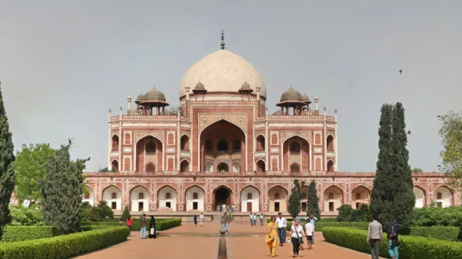India’s First Sunken Museum to Open at Humayun Tomb
India’s first sunken museum, located at the Humayun Tomb complex in Delhi, will have its grand opening on July 29, 2024. It will be open to visitors starting July 30. The museum’s launch aligns with the 46th UNESCO World Heritage Committee session, which will be attended by Union Culture and Tourism Minister Gajendra Singh Shekhawat and Prince Rahim Aga Khan.
Significance of Humayun’s Tomb
Humayun’s Tomb, a UNESCO World Heritage Site, is renowned for its architectural and historical significance. Constructed in the 16th century, this monument is a prime example of Mughal heritage and stands as a key cultural landmark in Delhi. It exemplifies the grandeur and intricate design of Mughal architecture, highlighting the era’s artistic and cultural achievements.
Inspiration behind the Museum Design
The newly inaugurated sunken museum at the Humayun Tomb complex draws inspiration from traditional Indian ‘baolis’ (stepwells or water tanks), skillfully blending historical elements with contemporary exhibition techniques. This innovative design not only improve the visual appeal of the museum but also connects visitors with historical architectural styles.
Exhibits and Artifacts
The museum features a range of historical artifacts, including:
- The final of Humayun’s Tomb was restored after storm damage in 2014.
- Rare items such as ‘farmans’ (decrees), an astrolabe, a celestial sphere, and a warrior’s helmet from the 16th or 17th century.
Construction of the museum began in April 2015, with an initial completion target set for 2017. The museum was strategically placed at the entrance of the World Heritage complex, establishing a link between various cultural sites within the area.
Technological Integration
The museum uses the latest technology to make your visit more exciting and informative. It includes 3-D videos that show historical scenes, helping you see what the past was like. There are also detailed scale models of the nearby Nizamuddin Dargah complex, which was built in the 14th century. These models show how the site has changed over time, making it easier to understand its long history and significance.
About Humayun Tomb
- Historical Significance and Design: Humayun’s Tomb, a UNESCO World Heritage Site, was commissioned in 1569-70 by Empress Bega Begum, Humayun’s widow. It is the first garden tomb built in India, showcasing Persian architectural influences and serving as a model for future Mughal architecture.
- Architectural Features: The tomb complex includes over 100 other tombs and a large charbagh (four-fold) garden. Its design, featuring a central dome and symmetrical layout, later inspired the creation of the Taj Mahal.
- Restoration and Decoration: In the 20th century, the tomb underwent restoration with support from the Aga Khan Trust. The building is constructed from red sandstone and is decorated with intricate geometric patterns and calligraphy, highlighting its artistic and architectural significance.
Month: Current Affairs - July, 2024
Category: India Nation & States Current Affairs







